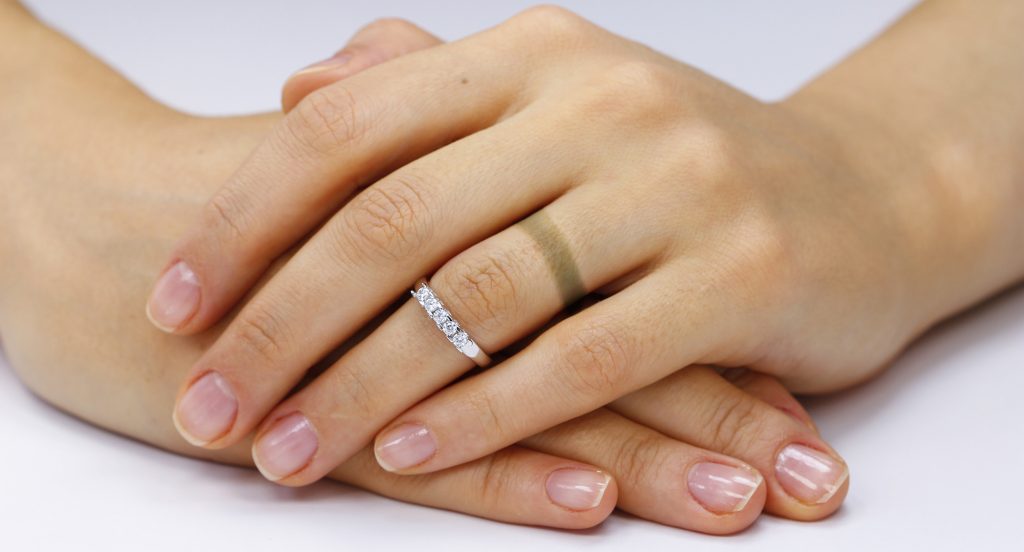
Oftentimes, gold jewelry can cause a blackening of the skin underneath the ring, but there are several reasons beyond the purity of the gold that could be the cause. Because gold is a relatively soft metal, most jewelers mix it with other metals such as silver, copper and nickel to increase its hardness and durability. The purity of gold is measured in karats (not to be confused with carats, which is used for measuring diamonds), and 1 karat (kt) equals 4.166% gold by weight, while 24kt gold is 100% pure gold. Most jewelry is 14kt or 18kt gold, which means that the jewelry is made up of approximately 50% of these other metals, which often cause skin discoloration.
However, some people will still experience discoloration with even the purest of gold jewelry, while others still will not, regardless of the purity. This is due to other environmental, chemical and biological factors.
On the Coast, we have a lot of salt, and therefore chlorine, in the atmosphere. Elements such as sulfur and chlorine react with the other metals in the gold jewelry, causing it to corrode and turn black, thus blackening the skin underneath.
The abrasive particles often found in cleaning chemicals and even make-up can cause the metals to break down more rapidly and expose the base metal(s) or generate fine dust, which would show up as a blackening of the jewelry and/or skin.
Believe it or not, even sweat and acids released by the body when perspiring could react with the gold alloy and discolor jewelry.
Before you get rid of your gold jewelry—or the person that gave it to you—because it’s causing skin discoloration, we recommend you remove jewelry before swimming, exercising, doing physical labor, cleaning, or anything else that may scratch or otherwise damage the gold. It is also important to clean your jewelry with an appropriate jewelry cleaning solution to remove any dirt, sweat, or chemicals that could react with the metals in your gold jewelry and prevent breakdown or damage.

